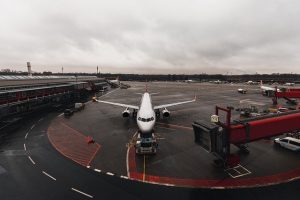
Ever wonder why airplanes are painted? At an altitude of 30,000 feet, most people won’t see an airplane’s exterior. Therefore, conventional wisdom may lead you to believe that paint isn’t necessarily. Aside from aesthetics, though, airplanes require paint for other reasons.
Repels Heat
One of the main reasons airplanes are painted is to repel heat and, more specifically, ultraviolet (UV) light. Airplanes are exposed to both heat and UV light. The UV light at 30,000 feet, in fact, is about twice as strong as the UV light at ground level. Prolonged exposure to heat and UV light can take a toll on an airplane’s airframe.
Airplanes are painted to repel heat and UV light. Most of them are painted white. White is able to repel more heat and UV light than black and other dark colors.
Protects Against Corrosion
Paint offers protection against corrosion. Different airplanes are made of different materials. Some of them feature a steel fuselage, whereas others feature an aluminum fuselage. Regardless, most airplanes are made of a metal or metal alloy. When exposed to moisture, metals and metal alloys can corrode.
Paint protects against corrosion by creating a physical barrier between the fuselage and the surrounding environment. Even if there’s moisture in the air, it will land on the painted fuselage. The underlying metal or metal alloy will remain dry, so it shouldn’t corrode.
Prolongs Life
With high-quality paint, airplanes will have a longer lifespan. Airplanes don’t last forever. A typical Boeing 747 has an average lifespan of about 30 years, whereas smaller private airplanes have a shorter lifespan. Aside from regular maintenance, though, you can extend the life of a private airplane by keeping it painted. Paint will protect the fuselage — as well as other parts of the airframe — from premature wear and tear.
Branding
Of course, some airplanes are painted for branding purposes as well. Nearly all commercial jets feature the name and/or logo of their respective brand. Branding such as this isn’t achieved with decals; it involves the use of paint.
Most commercial airplanes are painted white. In addition to a white airframe, they feature their brand’s name and/or logo painted over it.
In Conclusion
While it may seem like airplanes are painted strictly for aesthetic purposes, this isn’t the case. Paint repels heat and UV light, protects against corrosion, prolongs the life of airplanes and offers branding for commercial airplanes.



